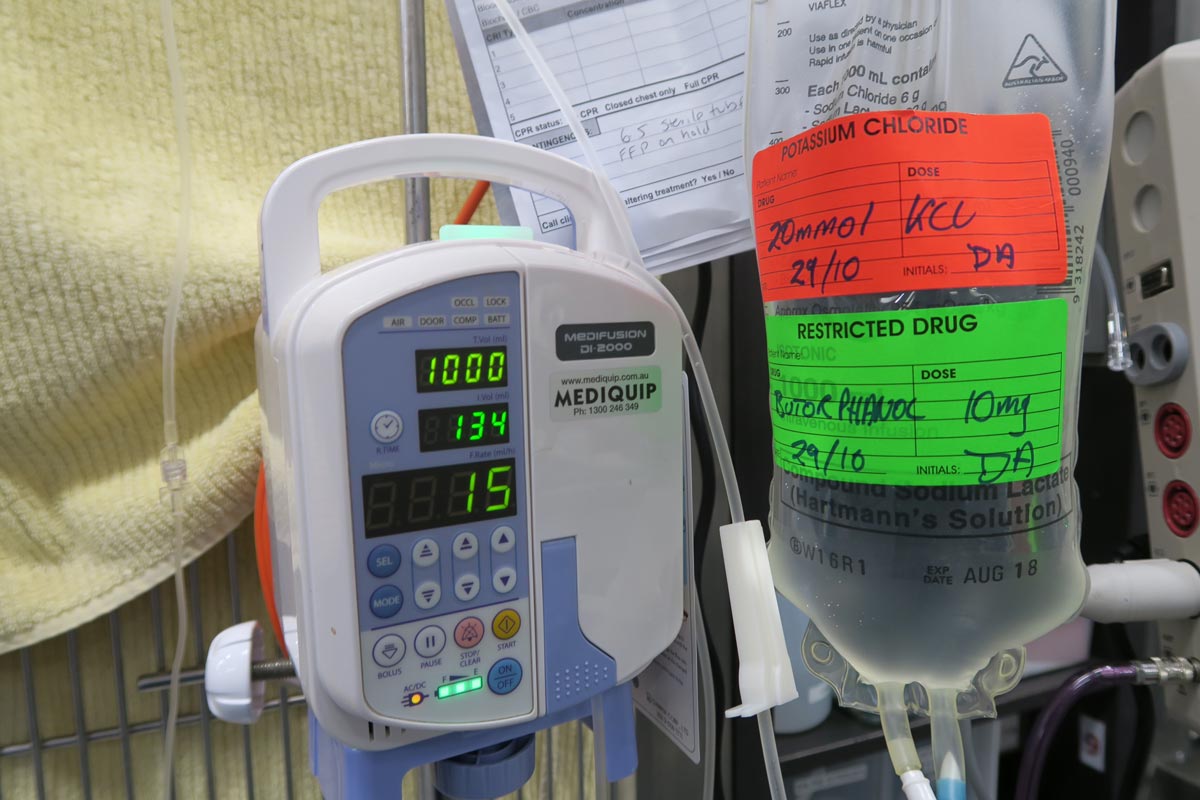A while ago we discussed the components of a fluid therapy plan and talked about hydration deficits. This week I want to touch on maintenance fluids.

Maintenance rates are typically calculated using the following formulae:
ml/day = 80 × bodyweight (kg)0.75 (cats)
ml/day = 132 × bodyweight (kg)0.75 (dogs)
or
ml/day = 30 × bodyweight (kg) + 70
These formulae better estimate the needs of smaller and larger patients. The flat 3ml/kg/hr underestimates for small patients and overestimates for larger patients.
This maintenance rate is in addition to rehydration rates.
So what sort of fluid should you use for maintenance?
True “maintenance” crystalloids:
- used to replace ongoing fluid and electrolyte loss from normal metabolism, not to replace perfusion and hydration deficits or ongoing losses from diarrhoea, for example
- sodium concentration less than plasma
- potassium concentrations higher than plasma
- glucose sometimes added to bring solute concentrations similar to extracellular fluid
Do you have to use maintenance crystalloids or can you use replacement crystalloids?
Replacement crystalloids are more frequently used for maintenance fluid therapy rather than maintenance crystalloids. This is because they are more readily available, we are more familiar with their use and effect, and patients are generally continued on these after perfusion and hydration deficits have been corrected.
In reality, most of the time it doesn’t really matter if we are using replacement crystalloids for maintenance therapy as the patient can manage the excess sodium, but some patients – especially cats – may require potassium supplementation. The key point is regular assessment of the patient’s hydration status and electrolytes – for example, every 12 to 24 hours for patients on IV fluids and not eating.

Leave a Reply